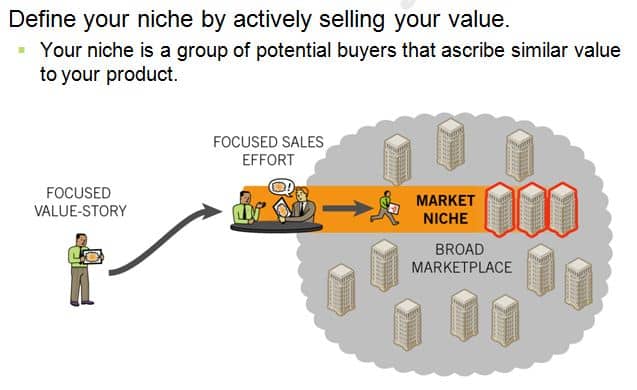Why is Customer Lifetime Value Important to the Growth of Your Business?

When you’re in charge of running a business, you need access to solid data. You can’t leave your business growth plans to chance; rather, you’ll want to do everything possible to set your organization up for success like knowing and using your Customer lifetime value (CLV ). Why is customer lifetime value important to the growth of your business?
Customer Lifetime Value And Its Impact on Business Growth
Without monitoring your key performance indicators, you’ll essentially have no way of knowing whether you’re on the right track. One of the most important KPIs for any business owner is customer lifetime value. Let’s take a closer look at why this performance metric matters, how it relates to sustainable growth, and how you can calculate it for optimal results.
What is Customer Lifetime Value?
Customer lifetime value (CLV ), sometimes referred to as customer lifetime value (LCV. LTV, or CLTV), is a measure of the worth of a given customer over time. It tells you how much that customer is likely to spend with your business during the course of your professional relationship. To put it another way, CLV can tell you how much revenue a customer will generate for your organization.
Knowing how much money a customer is worth to your company is a critical piece of information. While the idea of reducing a customer to a monetary figure might sound rather cold at first, understanding CLV doesn’t mean you can’t treat the customer with care. What it does mean is that you’ll have greater visibility into the processes of your organization and can make better decisions as a business owner. Understanding CLV is one of the critical factors affecting business growth.
How Does Customer Lifetime Value Relate to Business Growth?
Lifetime customer value can reveal substantial insights into what’s working – or what isn’t working – for your business. For one thing, using data science around CLV can give you a better idea of how loyal your customers are. If you find that your CLV is low and your customer churn rate is high, you’ll have the initial information you need to encourage a closer look at the kinds of customers you’re attracting and whether some aspect of your operations might be driving them away prematurely.
In contrast, a higher CLV rate typically correlates to higher levels of customer loyalty. That’s great news for your business and should be something you try to replicate with each new customer acquisition.
Obtaining New Customers
It’s important to note that obtaining a new customer will always be more costly than retaining an existing one. If you want to make solid decisions for your business’s bottom line, you’ll want to do everything in your power to increase your customer loyalty (and, in so doing, your CLV ). Understanding your CLV can also help you make more informed decisions pertaining to resource allocation.
If you know that a customer is more likely to churn, you can choose to redistribute the resources you’d otherwise spend on retaining them to nurturing other customer relationships or finding new, better customers to replace the ones that leave. You can simply look at the data and prioritize the customers with the most profit potential and this will help you close more sales in the long run.
Targeting the Wrong Customers
Keep in mind that lifetime customer value can reveal when you’re targeting the wrong customers to begin with. When it’s clear that your CLV is low across the board, you’ll be able to dig into what your customers have in common. If they’re spending too little and leave too early, that’s a good sign that your marketing and sales efforts can be improved. You’ll have the information you need to make necessary changes that allow you to get more out of your efforts. Ultimately, CLV – especially when combined with other metrics – can allow you to get a handle on the problems that plague your organization and come up with viable solutions for long-term growth.
What’s the Best Way to Calculate Customer Lifetime Value?
Understanding the importance of customer lifetime value is essential if you want to grow your business. But you’ll also need to know how to calculate this metric in order to leverage its potential. There are a number of complicated calculations you can use to arrive at your customer lifetime value.
Typically, you’ll want to factor in several figures, including:
- Average customer lifespan
- Customer churn rate
- Median invoice amount
- Average number of new customers per month
- Monthly marketing sales expenditures
One of the easier ways to manually calculate customer lifetime value is to multiply the average or median total order amount by the number of customers or purchases you have in a given year, multiplied by the average customer lifespan measured in years. There are other ways to calculate this number, as well, but most will require some work. A better alternative would be to use a free LVC calculator instead. A tool like this can allow you to simply plug in the numbers you have and let the spreadsheet do the work. With this type of calculator, you can clearly see how different metrics have a direct effect on the outcome.
Customer Lifetime Value is Important to the Growth of Your Business
Armed with the knowledge you acquire from your calculations, you can make adjustments to your strategy that will culminate in improved results, which can even lead to business opportunities for online growth. You’ll be able to focus on new opportunities for growth and assess where changes can be made to help you scale your business over time while reducing waste and unnecessary costs.
When you own a business, it’s hard not to let your own passion cloud your decisions. But in order to discover what’s holding you back, you need irrefutable data. Calculating your CLV is just one way to learn what you’re already doing right (and what can be improved) so you can achieve your dreams.
AUTHOR BIO: Jeff Shipman is the Director of Marketing Innovation at Semify, a white label marketing agency based in Rochester, New York. Semify provides quality SEO and PPC fulfillment solutions at-cost to help digital marketing agency owners achieve their dreams. Before moving to Western New York, Jeff earned a BA in History and an MBA at St. Bonaventure University. Go Bonnies!
















Leave a Reply